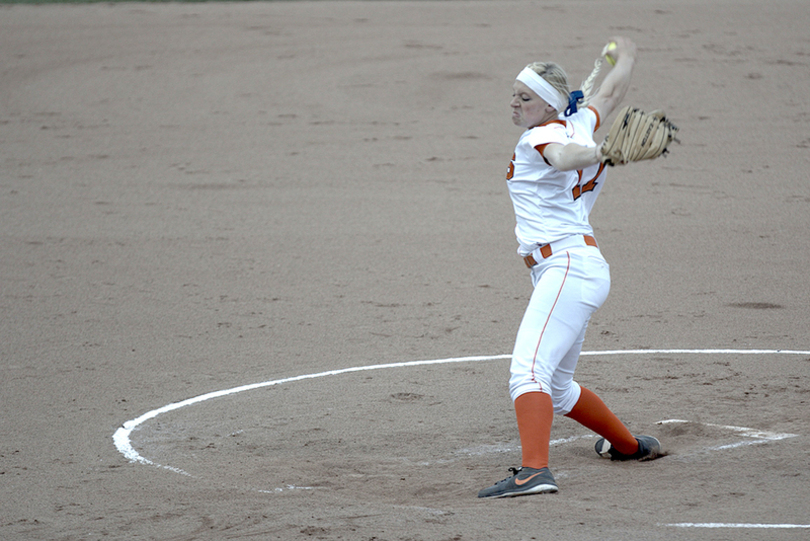Sydney O’Hara looks to strengthen arsenal with changeup

Last year, O’Hara led the Atlantic Coast Conference with a 1.47 earned run average in 62 innings. Now, she’s developing a changeup to add to her arsenal. Daily Orange File Photo
The pitcher who does everything “zero to 100” said she finally feels comfortable slowing down.
Despite Sydney O’Hara’s struggles with her changeup, she believes she found a new off-speed pitch that works. It’s slower than most changeups and has a sharp downward movement after the release. O’Hara calls her pitch “the suitcase,” and hopes to frighten opposing hitters with it in her senior season at Syracuse.
Last year, O’Hara led the Atlantic Coast Conference with a 1.47 earned run average in 62 innings. Now, she’s developing a changeup to add to her arsenal. She’ll experiment with it on Friday in the season opener against East Carolina in the Red and Black Showcase in Athens, Georgia.
When O’Hara was 12, she eyed her head coach, Bennett. O’Hara leered grudgingly at Bennett. He gave her a task she wanted no part of. O’Hara, who was a budding seventh grade star, was not yet comfortable throwing off-speed pitches. But Bennett wanted to see more out of his pitcher. So this summer league game, she could not throw the curveball that she favored, nor the riser that she worked on. Instead, Bennett wanted O’Hara to throw a full game using only a changeup.
“It was so frustrating,” O’Hara said.
For years, O’Hara hadn’t found a changeup that worked. As a 12-year-old, her coach, Kerry Bennett, forced her to develop her changeup, which she used sparingly. O’Hara kept in in her vault, but after an injury in her sophomore year at SU, she stopped throwing it.
That year, O’Hara developed a pain in her inner right elbow, yet continued to pitch with it. After seeking medical treatment, O’Hara was diagnosed with Golfer’s Elbow and tendonitis in her right arm, and a small tear in her Medial Collateral Ligament. Her doctor shut her down for six months. She hasn’t thrown her changeup much since.
Through her first three years at SU, she relied on her riser and two different curveballs: a regular curve and a backdoor curve. Over her softball career, O’Hara tried working with more than 20 different changeups, but not one worked.
“In my whole college career, I probably threw it like thirty times,” O’Hara said. “And I’m a senior…. My changeup in years past would probably go floating over the backstop. It was bad.”
But O’Hara enters 2017 as one of the ACC’s top arms. SU head coach Mike Bosch said she needs another off-speed pitch to thrive in one of softball’s toughest conferences. Bosch said difficulties with a changeup stem from her mechanics. She jerks, with a fast and excited release. She also works fast, which may contribute to her awkward release.
“I’m not smooth at all,” O’Hara said.
She has worked with repetition after repetition, mastering the position and the follow-through. She trained further by recreating live situations and testing the changeup against her teammates. She said her motion looks like swinging a suitcase out in front of her. So far in practice, she has induced ground balls to third base and weak dribblers across the infield.
It isn’t the flashiest pitch, but it could get the outs she needs. Bosch plans to call on O’Hara’s changeup. Before this season, O’Hara hated throwing a changeup. Now she’s begging to get more opportunities with “the suitcase.”
“I want to get better at it,” O’Hara said. “I want to be more effective than I have been in years past.”




